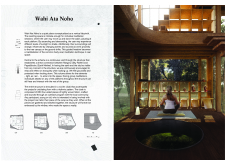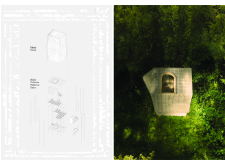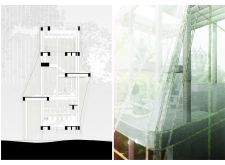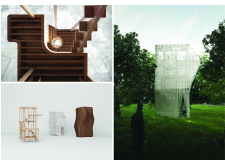5 key facts about this project
Wahi Ata Noho is designed as a vertical labyrinth, situated in a natural landscape that encourages both reflection and mindfulness. The design focuses on creating an intimate space for individual meditation as well as opportunities for group interaction. Users can move through various platforms, engaging with changing light and shadow, as well as the sounds and scents of the surrounding area.
Conceptual Framework
A continuous void runs through the structure, linking Ranginui (Sky Father) and Papatūānuku (Earth Mother). This feature creates both a symbolic and practical connection to nature. Users can look up and reflect on the sky, feeling a sense of peace, or look down and find grounding from the earth below. The open space helps to connect users with their environment, making it a center for contemplation.
Spatial Organization
The design allows for natural elements—light, air, and rain—to enter the interior, enhancing the sensory experience. This interaction makes the space dynamic and responsive to its surroundings. Areas designated for group meditation allow people to connect without losing their personal focus. The balance between solitude and community is a significant aspect of how the design works.
Materiality
The structure is wrapped in a woven cloak, emphasizing its flowing form with a rhythmic pattern. This fabric is made in partnership with the local community, showcasing a collaborative approach to design. People of all ages contribute their own pieces, which are assembled to create a single cohesive garment for the building. This effort not only ties the structure to its cultural context but also fosters a sense of shared ownership among those involved.
The thoughtful integration of meditation spaces, community participation, and natural elements distinguishes Wahi Ata Noho. The design invites users to explore their surroundings deeply while promoting a sense of togetherness. Each detail contributes to creating a calm environment, where the relationship between nature and personal reflection can flourish.






















































